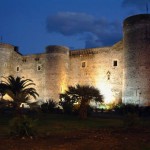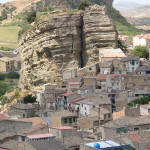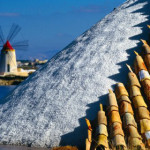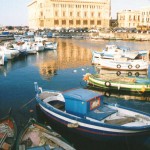Palermo is the main city of Sicily. Here the magic of its sunrises is mixed with the dust-covered history, the misfortune of earthquakes, the Real Estate speculation, poverty and mafia. But these negative elements do not really represent the real essence of this enchanting city. Palermo is an extraordinary city, famous for its great history and the variety of different cultures creating a mosaic of twinkling stars.
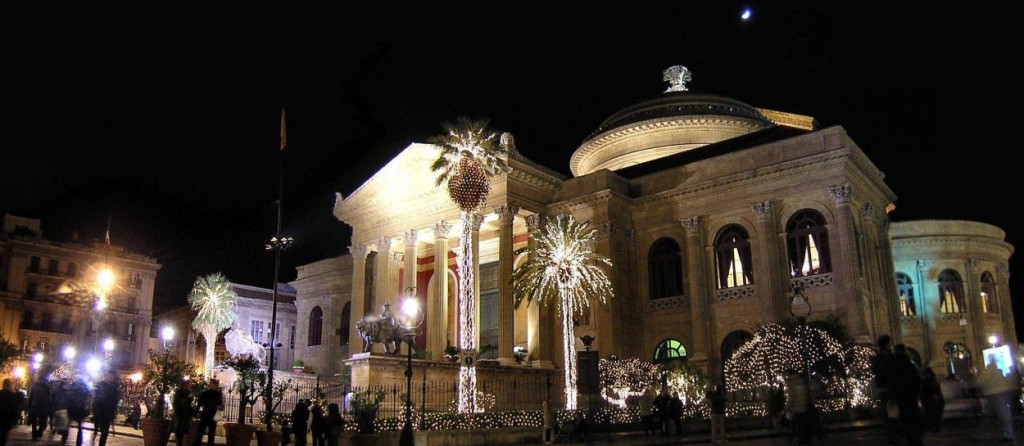
Palermo is the largest Sicilian city (it counts more than 800.000 inhabitants) and one of the most populated cultural centres in the Ancient Mediterranean area. The city is characterized by irregular and narrow streets by which you can easily walk, unless you pretend to visit the whole city in a day.
The main monuments timetables are different from each other, so you would better to plan your visit for each area in the city. You can choose a particular path based on historical ages, styles or geographical proximity. Or you can walk the streets and discover great attractions hidden around every corner, which are no less precious than those mentioned in the tourist guides.
What is certain is that the traces of the different city rulers are so various that you will admire the Arab-Norman mosque of San Giovanni degli Eremiti with five Arab-inspired red domes, the palatine Chapel of the Norman Palace or the Quattro Canti square, which is the convergence point of the two city main streets, that is Corso Vittorio Emanuele and Via Maqueda.
Moving towards the seaside, whether from Monreale or the highway, you will go into Palermo through Corso Calatafimi, an eternal avenue which gives you a right idea of the size of the city. On the sides (poorly reported as often happens in Sicily, unfortunately) there are two places to visit, which are as different as interesting.
On the one hand you will find the Capuchin’s Catacombs in the homonymous monastery. This places is famous for the embalmed bodies of deceased monks, whose mummies are very well preserved thanks to effective conservation techniques.
On the other hand you will find the Norman Zisa’s castle, a marvellous Norman Palace built in Arab architectural style and recently restored. It was the ancient residence of the Norman king, who ruled Sicily from Palermo.
Continuing on Corso Calatafimi there is Porta Nuova, a gate near the Norman Palace built in the year 1460 to enter the main city street Corso Vittorio Emanuele. However, its roof of tiles is a remaking of the Mannerist Style of 1535, commissioned by the viceroy Colonna to celebrate the triumphal entry of Emperor Charles V, after the conquest of Tunis. The restoration of 1696, which was made to repair earthquake damages, added four Telamones representing Moores.
Continuing, on the right side we will find Villa Bonanno, the former “San Giacomo Military District” and the Sclafani Palace, dated around 1330. Currently it is the seat of the Military Command of the Region.
Continuing on the right side there is the Cathedral Square. The Cathedral, although it has undergone several alterations, has not lost its majesty. It was early Christian church, Arab mosque and Christian temple for the Normans. It is connected to the tower through two arches and this allows tourists to get a great unique photo.
Continuing along Corso Vittorio Emanuele, you can browse the shops, although the presence of quite chaotic traffic of cars, motorcycles and pedestrians. Then, you will arrive at Quattro Canti Square (also called Vigliena Square), located at the intersection of Via Maqueda and Corso Vittorio Emanuele. It is a pleasant square in which there are four eighteenth century buildings divided into 3 levels and characterized by concave facades decorated with statues of the four seasons, Spanish kings and city patron saints.
The heart of Palermo nightlife is Piazza Pretoria. On the sides there are the Pretorian Palace, current seat of the Municipality, and Santa Caterina Church. Young people meet in the middle of the square near the Pretoria fountain, while tourists enjoy the place taking photographs.
Leaving Pretoria Square, you will be in Bellini Square, surrounded by the famous Bellini theatre (we tip to have a dinner in the famous pizzeria near the theatre, it worth it!) and the enchanting Norman Martorana Church and San Cataldo Church.
On the other side of Corso Vittorio Emanuele, among the alleys you will find the enchanting Vucciria Market. This name comes from the French boucherie, that is butcher’s shop. From X-XII century the market started to grow around Caracciolo square and Via Argenteria.
The stalls of fruit, fish, meat, cheese, spices and various items take on a magical glow when the night comes down. Stall ignite huge fires and the light is mirrored in the red big awnings. The mixture of scents and colours is as much indescribable as unforgettable.
You will also leisurely have a look at the International Puppet Museum. It often displays puppets exhibitions from around the world, being obviously focused on Sicilian Puppet. The cultural offer of Palermo is enriched with the Politeama Theatre, besides the Massimo Theatre (under eternal restoration) built at the end of the 19th century.
In the background there is Mount Pellegrino, having on its foot the Favorita Park (Parco della Favorita), considered the green lung fighting against the confusion and city traffic. Continuing towards the seaside you will find the Mondello gulf and the homonymous beach, where Palermo citizens refresh themselves during sultry summers with swims and parties all night long. Eleven kilometres far from Palermo there is Monreale, a must-see visit. The Benedictine monastery, which is characterized by a majestic cathedral and a great cloister, represents the peak of Arab-Norman art in Sicily.


